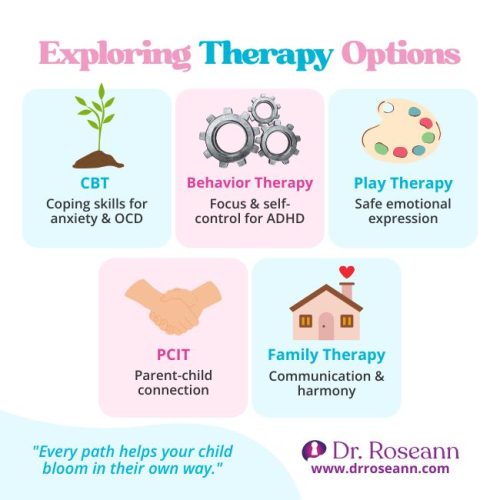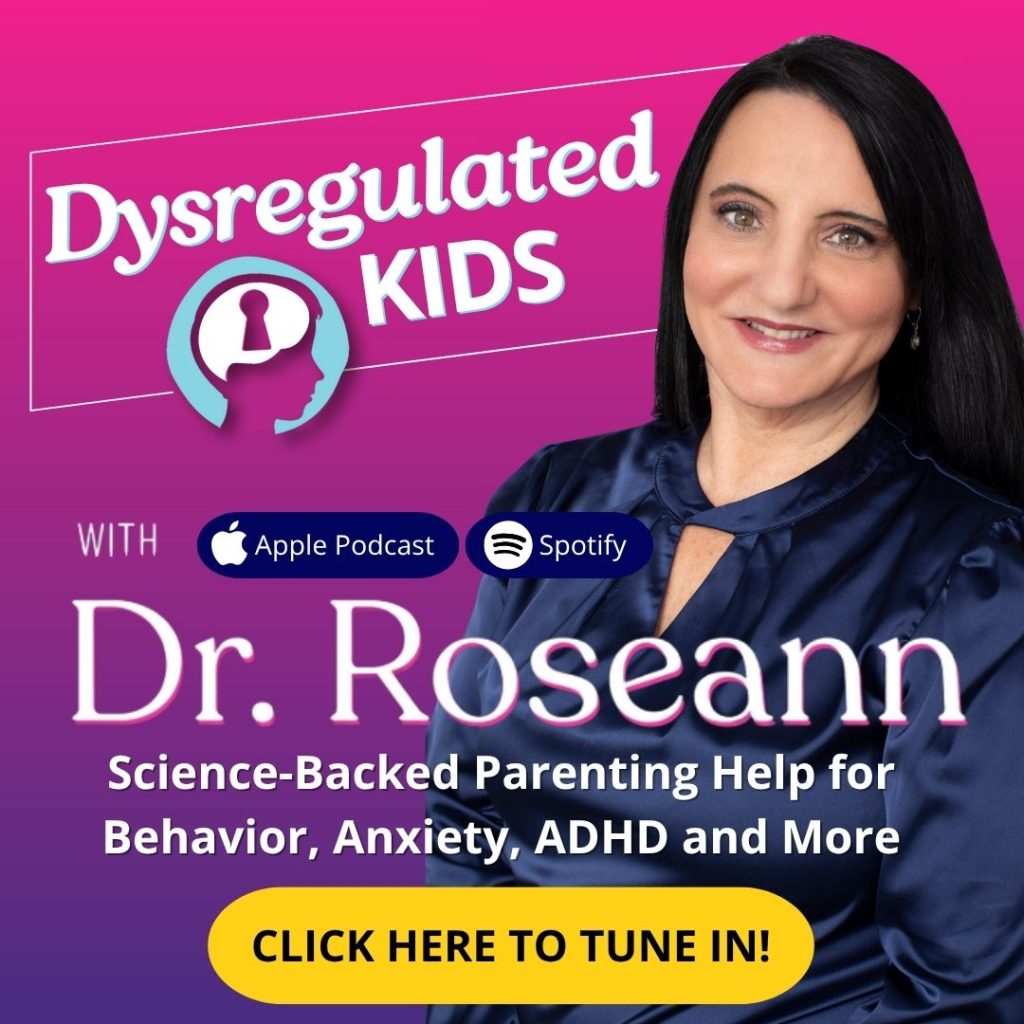Estimated reading time: 7 minutes
When your child struggles with anxiety, ADHD, mood swings, or emotional waves, choosing child therapy can feel like wandering through a foggy forest. Some moments feel manageable. Other times, it’s overwhelming—but even small steps show quiet courage.
Therapy doesn’t have to feel like rolling dice.
Some mornings feel like tiny ripples; other nights, storms crash unexpectedly. Asking, “Am I doing enough?” or “Which path helps?” doesn’t mean failure—it shows you notice and are learning which child therapy options fit your child’s unique brain.
In this guide, I offer you practical tools and simple steps for child therapy selection. Whether focus slips, emotions spike, or worries overwhelm, you’ll start spotting approaches that suit best. Remember, behavior is communication; dysregulation is the clue, regulation is the solution.
How To Understand Your Child’s Needs
Before choosing therapy for a child with ADHD or any other challenge, look closely at patterns: emotions spiking, impulses acting up, social moments tricky, or schoolwork overwhelming. Spotting these patterns helps guide your choices.
Think of therapy like a toolkit—different child therapy options fix different struggles. Kids with ADHD often do well with behavior therapy, which helps focus and manage impulses. Children with anxiety may benefit from CBT, learning to notice worries and shift them before they take over.
Every child’s brain works differently. Watch, ask questions, adjust along the way, and trust your instincts—you’re noticing what matters most.
What Therapy Options Are There?

When your child struggles, child therapy selection can feel like standing at a foggy crossroads. Every path promises change, yet figuring out which fits can feel heavy and confusing.
1. Cognitive Behavioral Therapy (CBT)
- Works best for: anxiety, depression, OCD
- Children learn to notice spiraling thoughts and gently shift them. This builds coping skills that really stick (Hofmann et al., 2012).
Ever notice how one small shift in thinking can completely change a day? I’ve watched kids flip from frustrated to focused with just a few guided exercises.
2. Behavior Therapy
- Often effective for ADHD
- Positive behaviors are reinforced while frustrating ones fade, helping focus and self-regulation (American Academy of Pediatrics, 2011).
Think of it like giving your child a toolbox for navigating everyday challenges—small tools, big impact.
3. Play Therapy
- Ideal for younger kids
- Landreth (2012) shows play gives feelings a natural outlet, letting kids express emotions safely.
Sometimes a game or roleplay tells you more about a child’s inner world than a hundred questions ever could.
4. Parent-Child Interaction Therapy (PCIT)
- Puts parents in the center of sessions
- Funderburk and Eyberg (2011) found structured strategies strengthen bonds while guiding children through tricky behaviors.
Parents often tell me that even the smallest wins feel huge—and they carry home lessons that ripple through daily life.
5. Family Therapy
- Focuses on family dynamics
- Carr (2012) notes that improving communication and resolving conflicts creates a more supportive environment.
When everyone feels heard, small adjustments ripple outward, often transforming the home in surprising ways.
How To Choose the Right Therapy Provider
Choosing the right therapist matters as much as picking the type of therapy. Think of it like finding a guide for a tricky trail—you want someone who knows the terrain and walks alongside your child patiently.
| Factor | Description |
|---|---|
| Credentials and Experience | Make sure your therapist is licensed and has real experience with kids in areas where your child struggles. Background matters—it often makes all the difference. |
| Approach and Techniques | Ask how they work. Do they lean more on play, structure, or conversation? Knowing their methods paints a picture of how sessions might feel and whether your child will actually click with the process. |
| Compatibility | Watch how your child responds in an initial visit. Some warm up instantly, others need a few sessions before relaxing. A strong connection often predicts how far progress can stretch, sometimes in surprising ways. |
| Involvement of Parents | Find out how much you’ll be included, especially with approaches like PCIT where parent participation drives lasting change. Your presence isn’t just support—it actually becomes part of the therapy itself. |
Small steps build big change, and every tiny win lays a foundation your child can grow from. Celebrate those moments, notice them, and remember that even little sparks of success can ignite bigger transformation.
Practical Steps to Take
- Consult with Professionals
Start by chatting with your pediatrician or school counselor. They often spot patterns you might miss and can point you toward therapists who truly understand kids. - Research Therapists
Look beyond diplomas and credentials. Watch how they interact with children because that connection often matters far more than a résumé. - Schedule Consultations
Notice how your child responds. Some warm up instantly, others need a few visits. Those first interactions reveal more than you might think about potential progress. - Evaluate Progress
Check in regularly. If sessions stall or your child seems disconnected, explore other options. Tiny shifts in understanding can spark surprisingly big changes.
Your presence shapes how your child experiences therapy. Learn the options, ask questions, and stay engaged—support isn’t passive, it becomes part of the process itself.
Seeking therapy takes courage. Celebrate every small win, notice sparks of progress, and remember even tiny breakthroughs can blossom into lasting transformation.
This is your child therapy decision guide, helping you navigate all child therapy options with confidence.
FAQs
What age is appropriate to start therapy?
Kids can benefit from therapy as early as preschool if you notice anxiety, aggression, or trouble managing emotions. For little ones, play-based approaches make therapy feel safe and natural, while older kids may do better with more structured or talk-based methods. Getting support early can keep small struggles from turning into bigger patterns.
How do I find the best therapist for my child?
Start by asking your pediatrician, school counselor, or trusted parents for referrals. Look for someone with experience in child therapy, who uses approaches matching your child’s needs. Meet with potential therapists, observe interactions, and choose someone your child feels comfortable with—connection matters as much as credentials.
What type of therapy is best for kids?
There isn’t a one-size-fits-all answer—what works depends on your child’s age, personality, and specific challenges. CBT often helps with anxiety or OCD, behavior therapy supports ADHD, and play therapy works wonders for younger children. Parent involvement and a good fit with the therapist matter just as much as the approach itself.
Citations
American Academy of Pediatrics. (2011). ADHD: Clinical practice guideline for the diagnosis, evaluation, and treatment of attention-deficit/hyperactivity disorder in children and adolescents. Pediatrics, 128(5), 1007–1022. https://doi.org/10.1542/peds.2011-2654
Carr, A. (2012). Family therapy: Concepts, process and practice (3rd ed.). Wiley Blackwell.
Funderburk, B. W., & Eyberg, S. (2011). Parent–child interaction therapy. In J. C. Norcross, G. R. VandenBos, & D. K. Freedheim (Eds.), History of psychotherapy: Continuity and change (2nd ed., pp. 415–420). American Psychological Association. https://doi.org/10.1037/12353-021
Hofmann, S. G., Asnaani, A., Vonk, I. J., Sawyer, A. T., & Fang, A. (2012). The Efficacy of Cognitive Behavioral Therapy: A Review of Meta-analyses. Cognitive therapy and research, 36(5), 427–440. https://doi.org/10.1007/s10608-012-9476-1
Landreth, G. L. (2012). Play therapy: The art of relationship (3rd ed.). Routledge/Taylor & Francis Group.
Always remember… “Calm Brain, Happy Family™”
Disclaimer: This article is not intended to give health advice and it is recommended to consult with a physician before beginning any new wellness regime. *The effectiveness of diagnosis and treatment varies by patient and condition. Dr. Roseann Capanna-Hodge, LLC does not guarantee certain results.
Are you looking for SOLUTIONS for your struggling child or teen?
Dr. Roseann and her team are all about science-backed solutions, so you are in the right place!









